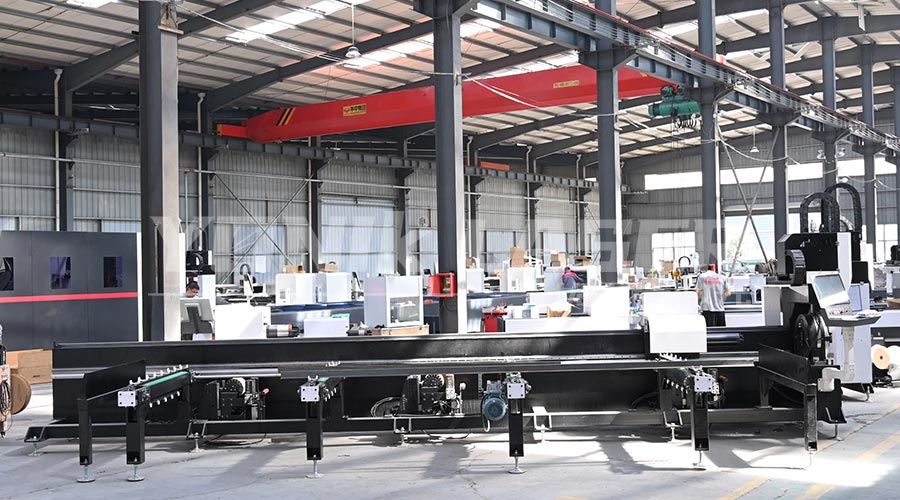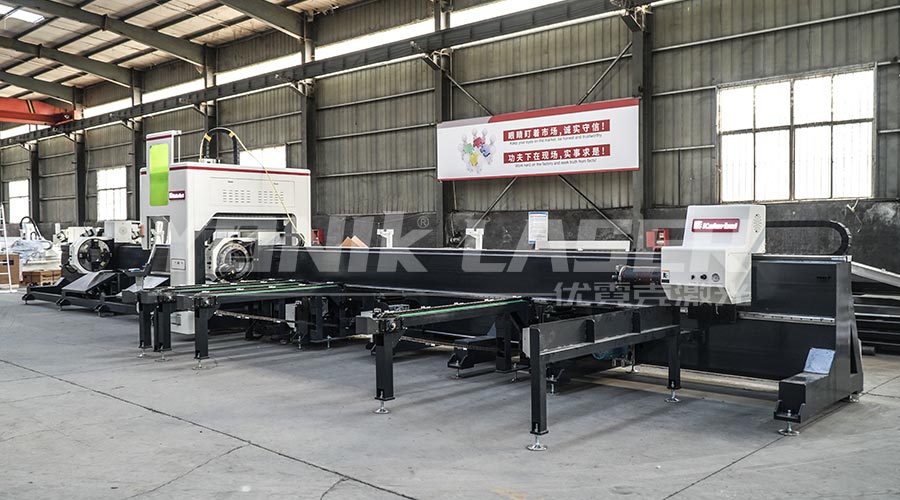In laser cutting, cutting path planning directly impacts production efficiency, material utilization, and equipment lifespan. Poorly designed paths can lead to excessive non-cutting travel, repeated heating, path conflicts, and other issues that reduce efficiency, cause material deformation, or accelerate equipment wear. This article analyzes the core challenges of cutting path optimization, combines algorithm improvements, process design, and real-world cases to systematically explain how scientific path planning can enhance laser cutting performance, providing practical guidance for enterprises to reduce costs and improve efficiency.

1. Core Value of Cutting Path Optimization: Balancing Efficiency and Cost
Cutting paths determine the laser head’s movement trajectory on the material surface, directly influencing key metrics:
Production Efficiency: Optimal paths minimize non-cutting travel (laser head movement without cutting), reducing cycle time per part.
Material Utilization: Compact nesting and shared cutting lines reduce scrap.
Equipment Lifespan: Smooth paths reduce mechanical vibration, extending the service life of critical components like guides and servo motors.
Processing Quality: Avoiding repeated heating areas minimizes material deformation and heat-affected zone (HAZ) expansion.
For example, when cutting a nested sheet with multiple parts, unoptimized paths may force the laser head to “zigzag” across blank areas, increasing non-cutting travel by over 30%. Optimized paths can reduce this to under 5%, cutting cycle time by 20%.
2. Common Challenges in Cutting Path Planning: Theory vs. Practice
While theoretical models (e.g., Traveling Salesman Problem, shortest path algorithms) are mature, practical implementation faces hurdles:
2.1 Excessive Non-Cutting Travel: The Efficiency Drain
Laser heads must move between parts after completing a cut. Unoptimized paths can result in non-cutting travel exceeding 40% of total processing time. For instance, cutting a sheet with 10 small parts may force the laser head to traverse kilometers of blank space due to poor sequencing.
2.2 Repeated Heating: The Hidden Cause of Deformation
In dense nesting, paths that ignore heating order can cause local material to expand repeatedly, leading to deformation. For example, cutting outer contours before inner parts may warp the outer shape due to heat stress from inner cuts.
2.3 Path Conflicts: Coordination Pitfalls in Multi-Part Cutting
In sheets with multiple independent parts, paths that ignore part positions may cause collisions with cut parts or overlapping cutting lines, risking beam interruption or material scratches.
2.4 Ignoring Material-Specific Constraints
Some materials require special path designs. Highly reflective aluminum demands minimized dwell time to prevent lens damage from reflected light, while thin sheets need spiral feeds to reduce vibration.
3. Core Technologies for Cutting Path Optimization: Merging Algorithms and Craftsmanship
Path optimization requires balancing theoretical algorithms with practical process knowledge. Key strategies include:
3.1 Shortest Path Algorithms for Non-Cutting Travel Reduction
Advanced algorithms like Ant Colony Optimization (ACO) or Genetic Algorithms (GA) generate optimal cutting sequences to minimize total travel distance. For example, ACO can reduce non-cutting travel from 40% to under 10%, cutting cycle time by 25%.
3.2 Process-Driven Path Design Principles
Inside-Out, Small-to-Large: Cut inner contours/small parts first to reduce heat stress accumulation.
Shared Cutting Lines: Design adjacent parts to share edges, reducing total cutting length. For a 2x2 grid, shared lines can cut total length by 30%.
Spiral Feeds: Replace linear feeds with spirals for thin sheets to minimize vibration and heat concentration.
3.3 Simulation Software for Path Validation
Tools like SigmaNEST or Lantek simulate path execution to identify conflicts (e.g., laser head collisions with cut parts). Simulation can preempt risky moves, such as crossing tall cut regions (>10mm).
3.4 Material-Adaptive Path Adjustments
Reflective Materials (Aluminum, Copper): Use “stepped” paths to limit dwell time.
Thin Sheets (<1mm): Apply zigzag feeds to disperse heat.
Thick Plates (>8mm): Design layered paths to avoid excessive single-pass heat input.
4. Real-World Cases: Efficiency Gains from Path Optimization
Case 1: Automotive Part Nesting Efficiency Boost
Issue: Cutting a sheet with 20 small automotive parts had 35% non-cutting travel, with 12-minute cycle time.
Solution: GA-generated sequences + shared lines.
Result: Non-cutting travel fell to 8%, cycle time to 9 minutes. Equipment utilization rose 30%, saving $22,500 annually in energy.
Case 2: Sheet Metal Box Deformation Control
Issue: Cutting nested box parts warped outer contours due to heat stress from inner cuts, with 15% scrap rate.
Solution: Reversed cut order (inner-first) + spiral feeds.
Result: Deformation reduced 80%, scrap rate to 2%. Material yield improved 12%.
Case 3: Aluminum Cutting Lens Protection
Issue: Reflective aluminum caused lens damage from prolonged dwell, requiring lens replacement every 3 months.
Solution: Stepped paths to limit dwell time.
Result: Lens life doubled to 6 months, saving $12,000 yearly.
5. Future Trends: The Evolution of Intelligent Path Planning
AI and Industrial Internet technologies are driving path planning from “static optimization” to “dynamic adaptation”:
5.1 AI-Driven Real-Time Adjustments
Machine learning analyzes material thickness, surface conditions, and other variables to dynamically adjust paths. For example, AI can increase cutting density in uneven thickness areas to ensure penetration.
5.2 Digital Twin-Enabled Virtual Debugging
Simulate paths in virtual environments to preempt conflicts. Digital twins reduce physical debugging time by over 50%.
5.3 5G + Edge Computing for Distributed Optimization
5G’s low latency enables edge-deployed algorithms to coordinate multi-device paths. In flexible lines, edge computing can synchronize multiple lasers to avoid resource conflicts.

Conclusion
Cutting path optimization is pivotal for efficiency and cost control in laser cutting. By merging algorithms (ACO, GA) with process expertise (shared lines, spiral feeds) and simulation validation, enterprises can slash non-cutting travel, minimize deformation, and extend equipment life. As AI and digital twins mature, path planning will shift from manual experience to intelligent adaptation, empowering smarter manufacturing.
2025-07-22
2025-07-21
2025-07-19